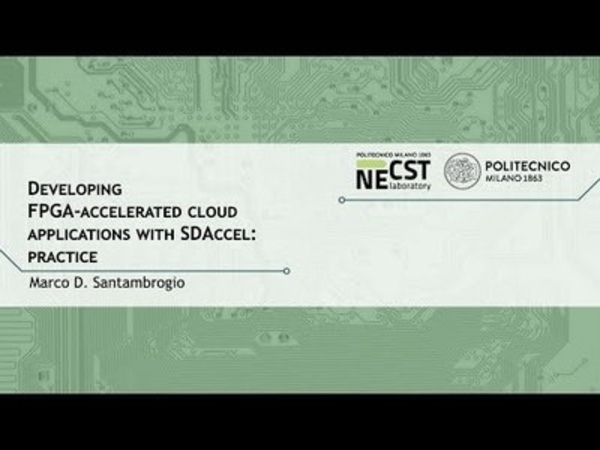Price:
6125 EUR
Contact
Politecnico di Milano
Description
This course will present several scenarios where the workloads require more performance than can be obtained even by using the fastest CPUs. This scenario is turning cloud and data center architectures toward accelerated computing.
Within this course we are going to show you how to gain benefits by using Xilinx SDAccel to program Amazon EC2 F1 instances.
We are going to do this through a working example of an algorithm used in computational biology.
The huge amount of data they need to process and the complexity of these algorithms, raised the problem of increasing the amount of computational power needed to perform the computation. In this scenario, hardware accelerators revealed to be efficient in achieving a speed-up in the computation while, at the same time, saving power consumption.
Among the algorithms used in computational biology, the Smith-Waterman algorithm is a dynamic programming algorithm, guaranteed to find the optimal local alignment between two strings that could be nucleotides or proteins. In the following classes we presented an analysis and successive FPGA-based hardware acceleration of the Smith-Waterman algorithm used to perform pairwise alignment of DNA sequences.
Within this context, this course is focusing on distributed, heterogeneous cloud infrastructures, providing you details on how to use Xilinx SDAccel, through working examples, to bring your solutions to life by using the Amazon EC2 F1 instances.
Specific details
Category of Education
Computer Sciense and IT







 How to resolve AdBlock issue?
How to resolve AdBlock issue? 


Comments (0)